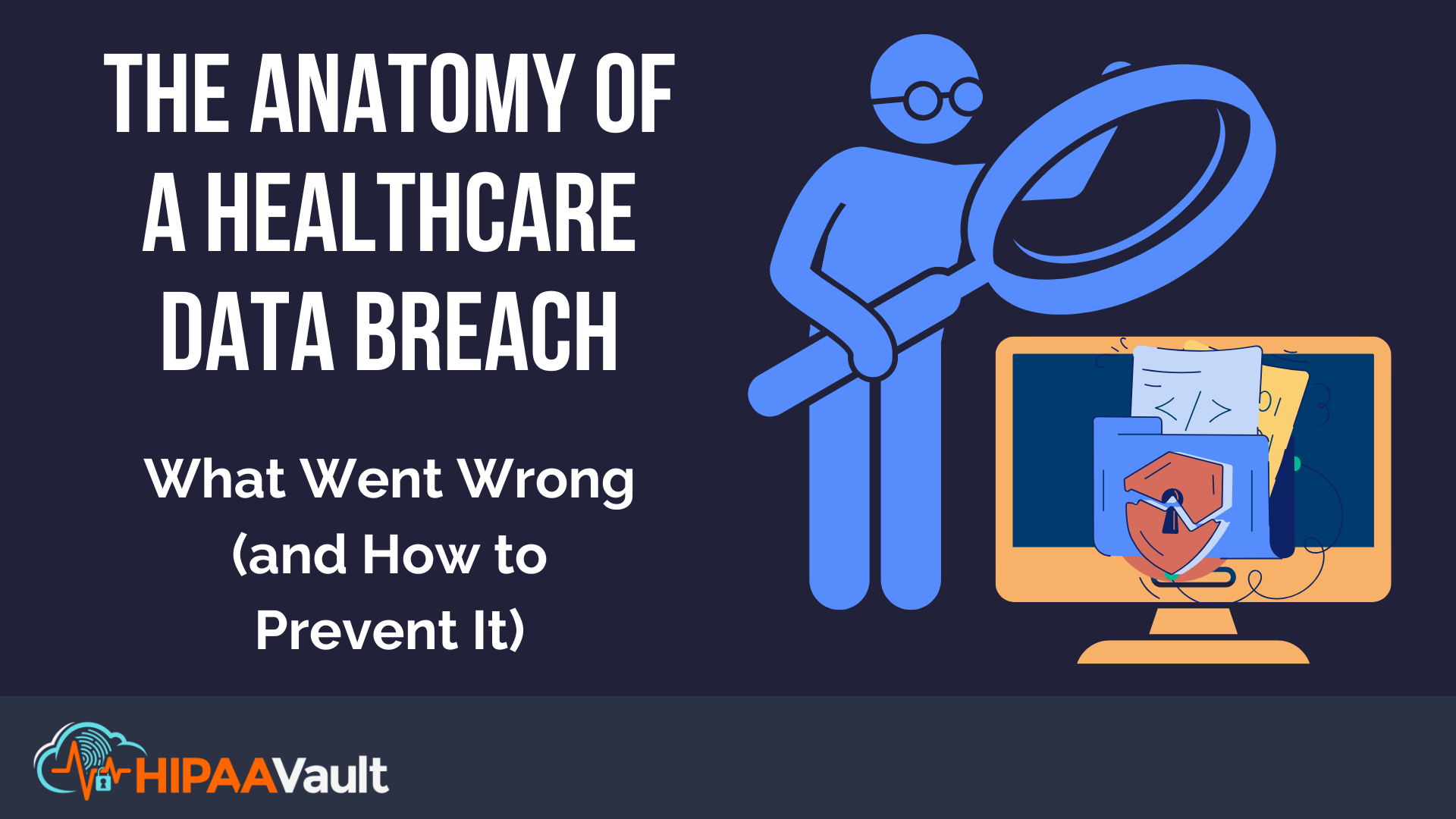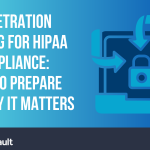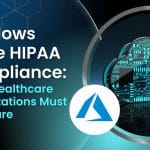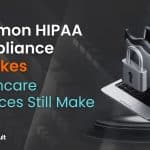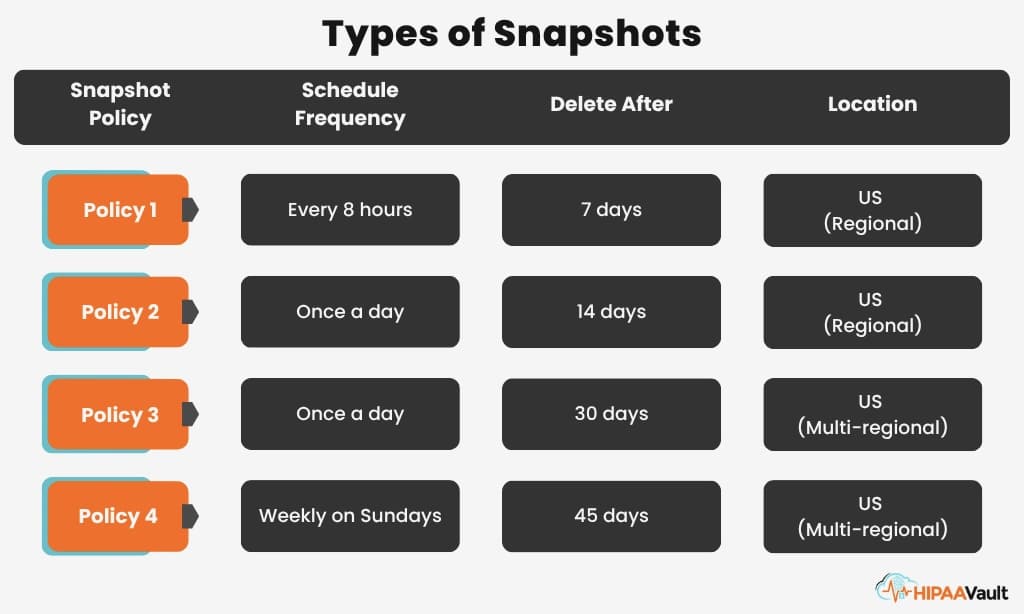The Anatomy of a Healthcare Data Breach: What Went Wrong (and How to Prevent It)
Introduction: Why Every Second Counts in a Healthcare Data Breach
In recent months, ransomware attacks in the healthcare sector have risen sharply, compromising millions of patient records and causing widespread operational disruptions. These attacks are not only costly but also expose organizations to regulatory penalties and reputational damage. As a trusted leader in HIPAA-compliant hosting, HIPAA Vault has helped healthcare providers prevent such incidents by deploying secure, cloud-based infrastructure and rapid response capabilities.
Understanding the full lifecycle of a healthcare data breach—how it unfolds, the weaknesses it exploits, and the missteps that allow it to escalate—is essential for developing a prevention strategy that works. This guide will explore real-world cases, identify root causes, and offer practical solutions grounded in HIPAA Vault’s proven approach to data security.
Why Healthcare Is a Prime Target
Healthcare systems are highly attractive to cybercriminals due to the volume and sensitivity of protected health information (PHI) they manage. Yet, many organizations still rely on outdated systems with limited security controls, creating numerous vulnerabilities. Budget constraints, staff shortages, and the complexity of regulatory compliance further exacerbate the risk.
Healthcare environments often lack modern defenses like multi-factor authentication, network segmentation, and encrypted backups. As a result, attackers find it easier to gain access, move laterally within systems, and exfiltrate data with minimal resistance.
How Breaches Happen: A Step-by-Step Breakdown
A typical healthcare data breach begins with an initial compromise, most often through phishing emails or malicious links that trick employees into revealing credentials. In other cases, attackers exploit unpatched vulnerabilities in outdated software or remote access tools. Once inside, they use the stolen credentials to move laterally through the network, escalating privileges and quietly gathering sensitive information.
The data exfiltration phase follows, during which large volumes of PHI are extracted and transmitted to external servers. This phase can go undetected for weeks or even months, especially if there is no centralized logging or anomaly detection in place. The final—and often most damaging—stage occurs when the breach is discovered too late, resulting in delayed responses, disrupted care delivery, and significant financial and regulatory fallout.
Real-World Breach Example: A Case Study in What Went Wrong
A notable case involved CommonSpirit Health, one of the largest healthcare systems in the United States. In 2022, the organization experienced a massive ransomware attack that disrupted operations across multiple states. Over 600,000 patient records were exposed.
The attack was traced to compromised credentials, poor network segmentation, and inadequate detection capabilities. System recovery took weeks, impacting patient care and triggering regulatory investigations under HIPAA. This example underscores how even well-resourced organizations can fall victim to preventable weaknesses if foundational controls are lacking.
Security Gaps That Lead to Breaches
Breaches often stem from a series of systemic failures. One of the most common is the absence of encryption for PHI, either in storage or during transmission. Without encryption, any intercepted data can be immediately exploited. Similarly, weak access controls allow unauthorized users to gain access to sensitive systems, especially when user roles are not clearly defined or regularly reviewed.
A lack of centralized audit logging makes it difficult to detect and investigate unusual activity in real time. Additionally, many organizations skip regular risk assessments, leaving them unaware of critical vulnerabilities in their systems. Employee training is another major gap. Staff who are not taught to recognize phishing attempts or who lack basic cybersecurity hygiene increase the likelihood of a successful attack.
How to Fortify Your Organization Against Breaches
The most effective way to prevent breaches is to adopt a layered security strategy that addresses both technical and human vulnerabilities. Encrypting all PHI, both in transit and at rest, is fundamental. Using industry-standard encryption like AES-256 and TLS protocols ensures that intercepted data remains unintelligible to unauthorized actors.
Regular vulnerability assessments and penetration testing are also essential. These exercises help identify weaknesses before attackers can exploit them. HIPAA Vault provides managed penetration testing and scanning services to support this process.
Strong access controls must be implemented using principles of least privilege. Role-based access and multi-factor authentication limit exposure in the event of credential theft. Organizations should also develop and regularly test incident response plans to ensure fast, coordinated actions when a breach attempt occurs. Finally, ongoing employee training helps create a culture of awareness, making staff a key line of defense rather than a vulnerability.
How HIPAA Vault Helps Prevent Healthcare Data Breaches
HIPAA Vault offers a proactive approach to healthcare data breach prevention by combining technical excellence with regulatory expertise. Our services include 24/7/365 monitoring, real-time threat detection, and rapid incident response—all backed by a live support team with under 15-minute response times.
Our infrastructure is built on Google Cloud Platform, which is FedRAMP-certified and compliant with key standards like FISMA, HITRUST, and NIST 800-171. This provides clients with scalable, resilient environments that meet the highest levels of data security.
We also support Infrastructure as Code (IaC) deployments, enabling healthcare organizations to automate their infrastructure securely and consistently. Whether it’s supporting robotic surgery platforms or federal systems like the Wyoming Eligibility System, HIPAA Vault delivers tailored solutions that eliminate complexity and reduce breach risks.
HIPAA Vault also assists clients with regulatory compliance efforts, offering tools and documentation to support audits, reporting, and ongoing assessments. This ensures not just technical security, but also operational readiness in the face of evolving HIPAA requirements.
Conclusion: Prevention Is Possible—With the Right Partner
Healthcare data breaches are not inevitable. With the right combination of modern infrastructure, strong policies, and informed personnel, they can be effectively prevented. HIPAA Vault delivers this trifecta through its secure, HIPAA-compliant hosting solutions and expert support.
Our clients—from emerging healthcare startups to established federal partners—rely on our layered defenses and rapid response capabilities to stay ahead of threats. If your organization is seeking a trusted partner to reduce risk and strengthen compliance, HIPAA Vault is ready to help.
Learn more about our HIPAA-Compliant Hosting Solutions or contact us to assess your current security posture.


